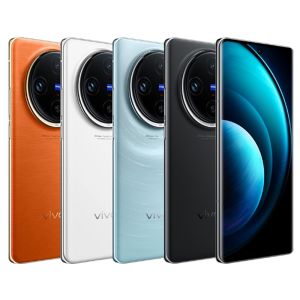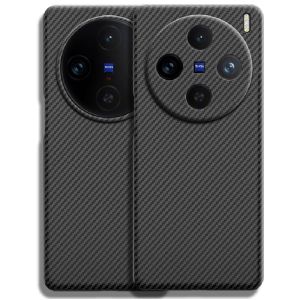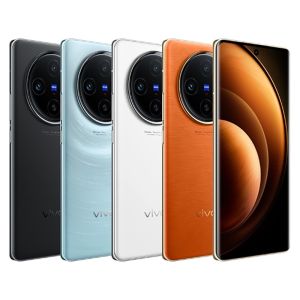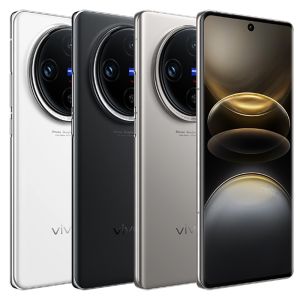The Pro can also have the image power of Pro+, this time vivo X100 Pro has shouted such a slogan, equipped with a strong image hardware system officially released, so its strength is actually geometric? Can it achieve the level of image ceiling mentioned at the launch event?
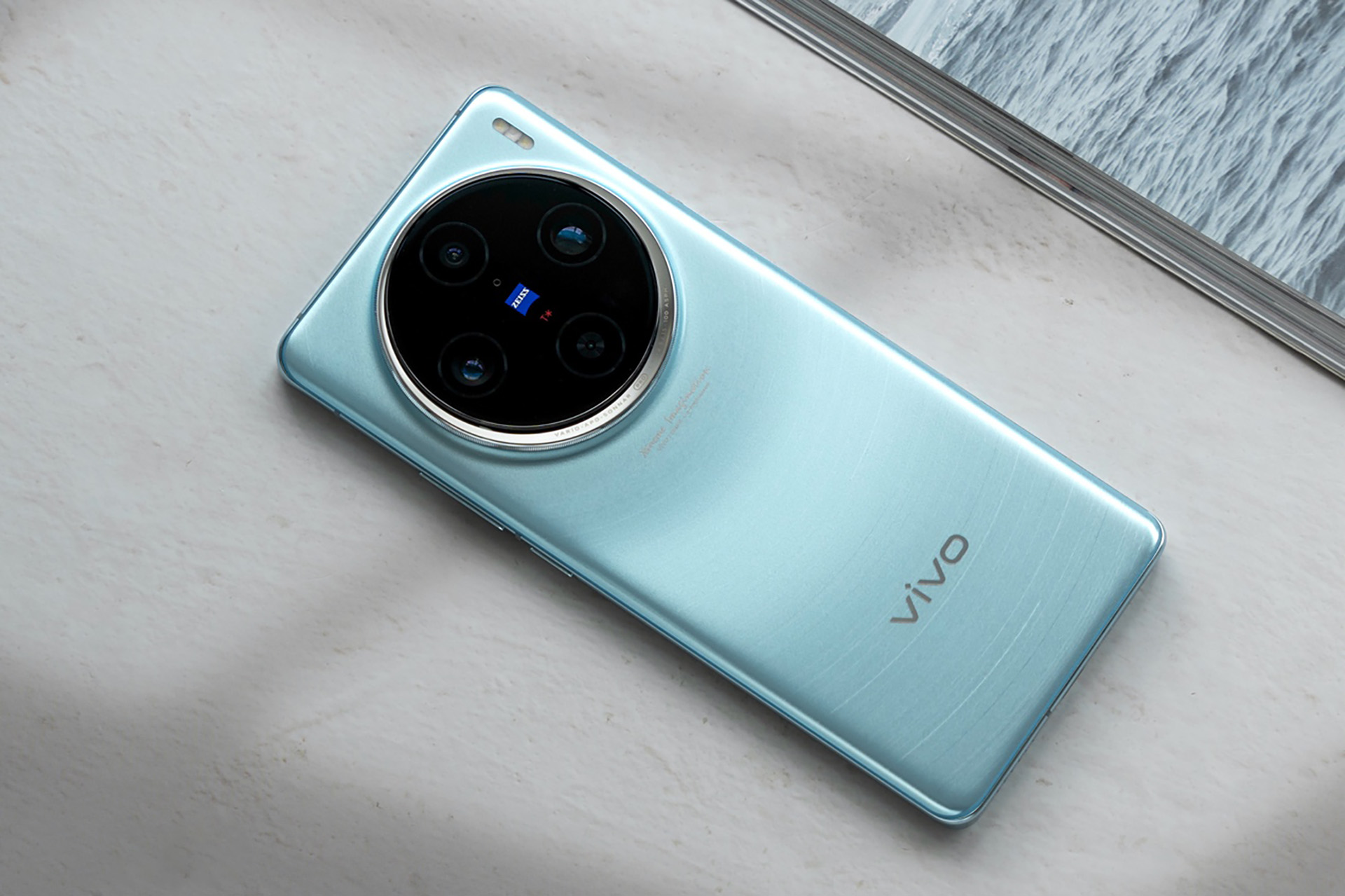
The heart has the sun and the moon, the hand can pick the stars.
First of all, from the appearance of the design, vivo X100 Pro or due to the quality of the lens, the design of the module using the "Oreo" round, but this time vivo played a trick, Pro version of the sun ring as the inspiration, around the black lens module, reflecting each other.
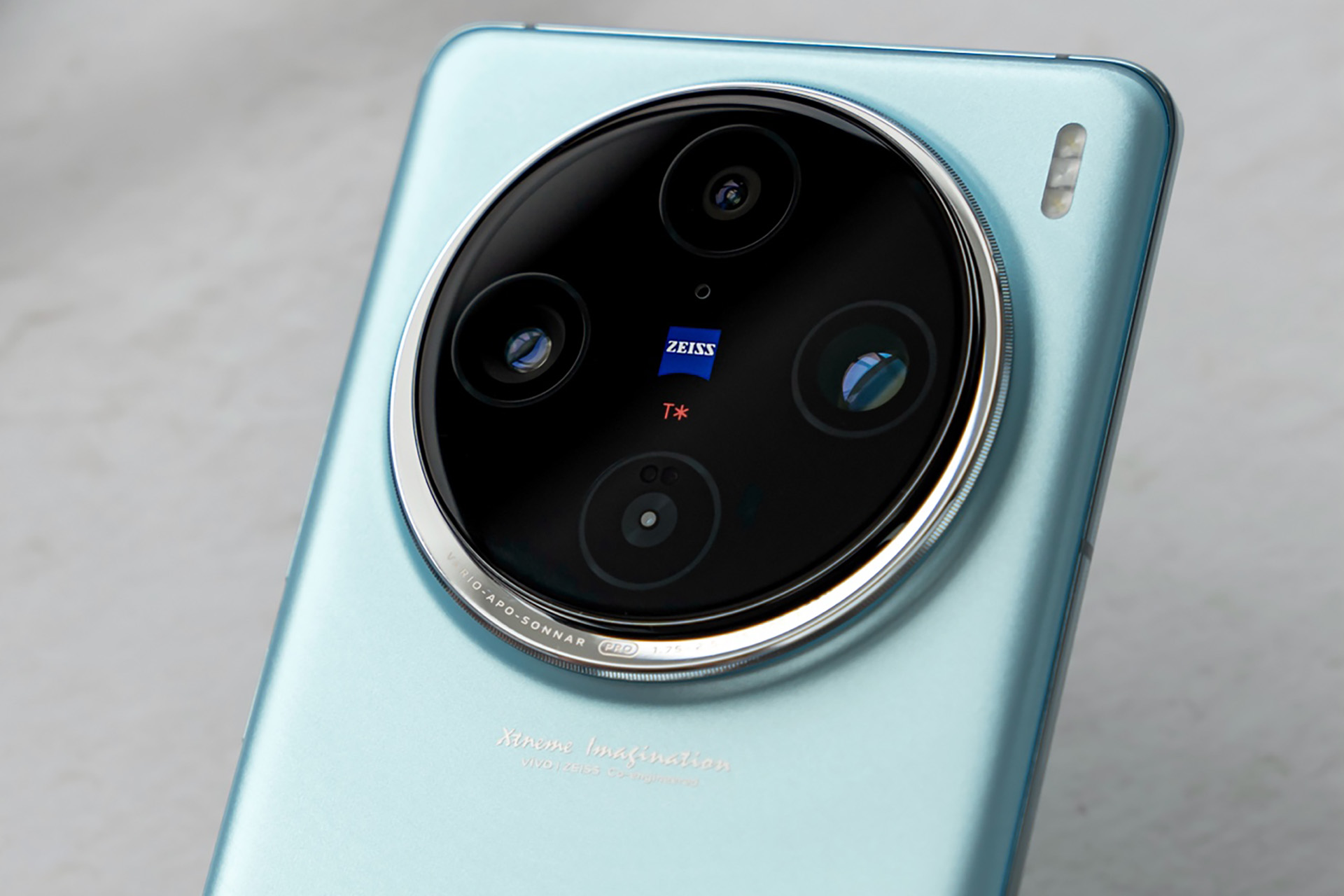
Aircraft-grade mirrored stainless steel also gives the ring a textured look that shines when you turn the phone, and the lens module is covered by a one-piece cut-out 2.5D lens that looks and feels great.
We received the "Star Trail Blue" colour scheme, the back panel of this colour scheme has hidden details, inspired by the star trails, a circle of star trails engraved on the "silver blue" back panel, under different light, you can see the star trails appearing faintly on the back panel. The addition of the star trails on the back panel also makes the back panel look more layered. The main colour tone of silver blue is fresh and elegant enough, which is comparable to the blue colour of this year's iPhone 15 series.
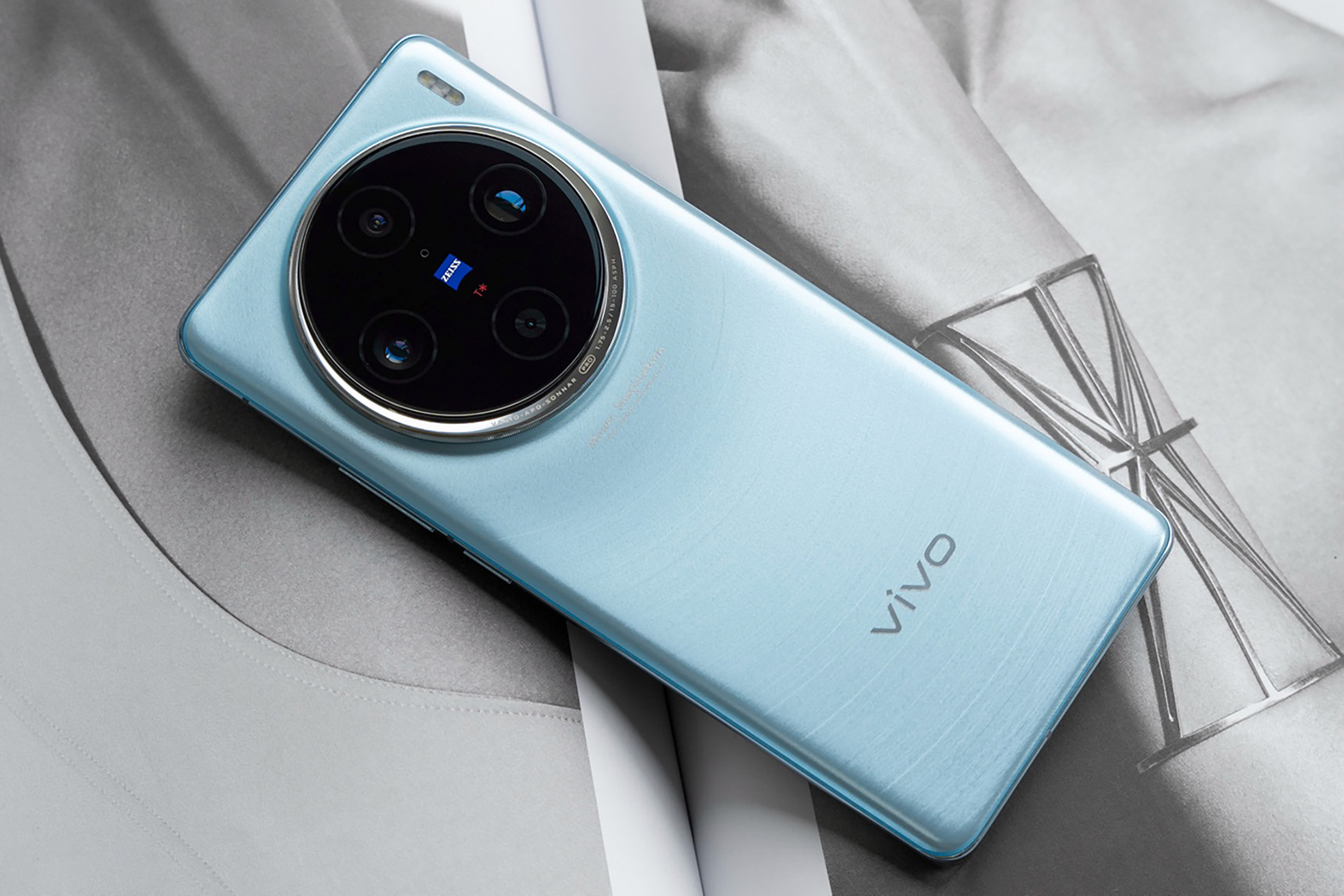
Pro Class Positioning, Beyond Pro+ Class Imaging Capabilities
vivo X100 Pro image strength, can not say the first, should also be this year's flagship machine in the existence of one of the two, let's look at the hardware configuration, vivo X100 Pro's main camera with an IMX989 sensor, 1 inch large bottom, f/1.75 aperture, covered with a new upgrade of the T * coating, optimising the situation of glare ghosting. The ultra-wide angle is a 1/2.76-inch sensor with an f/2.0 aperture and an equivalent 15mm focal length.
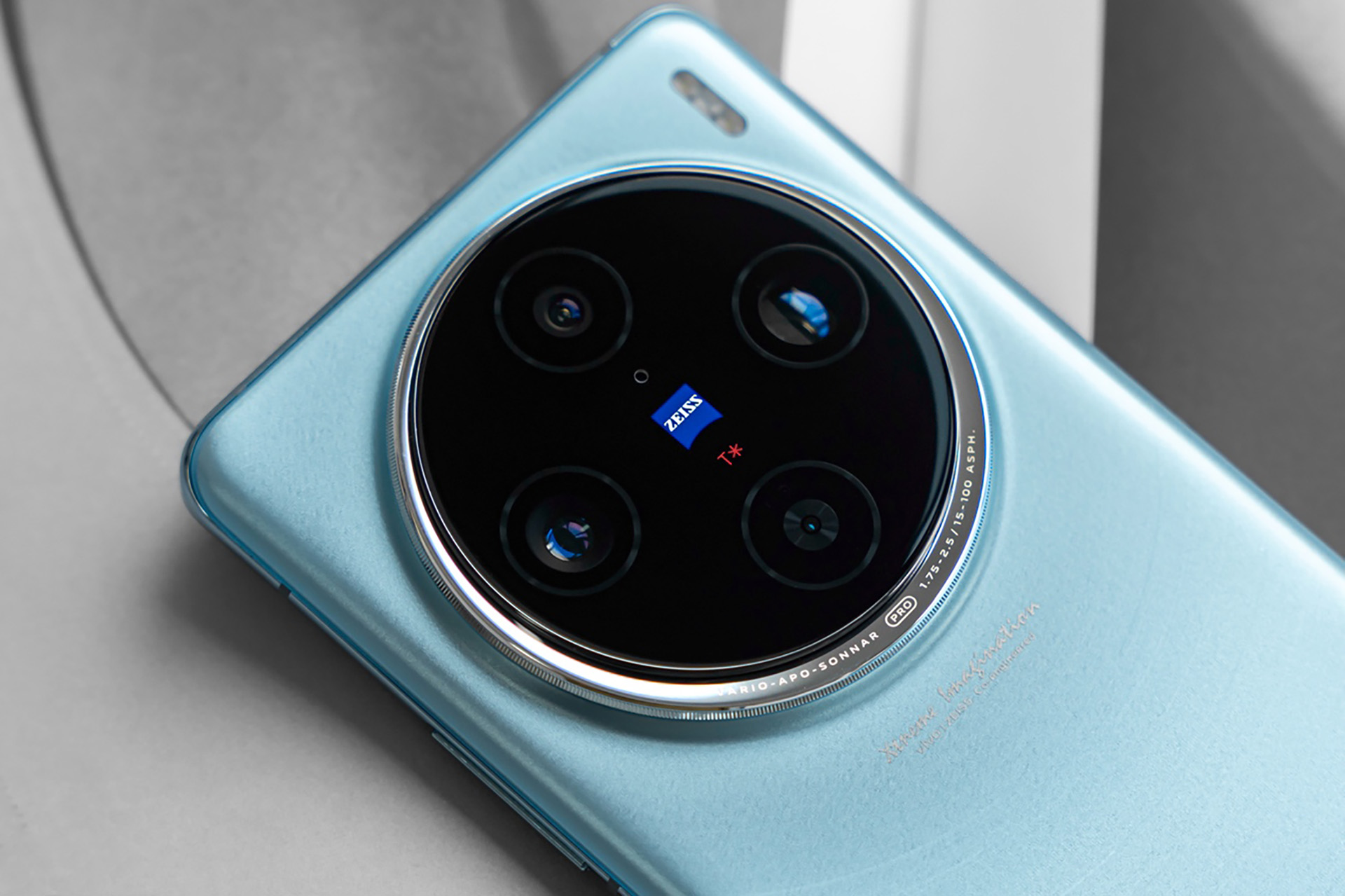
The telephoto lens has a big upgrade this time, bringing the Zeiss APO Super Telephoto, 1/2-inch sensor, f/2.5 aperture, support for 4.3x optical zoom, equivalent focal length of 100mm, the amount of incoming light compared to the X90 Pro + improved by 97%, and also brings the design of the floating lens group, bringing the function of macro shooting, the function of this lens should be said to be quite comprehensive.
We'll take a look at the shooting results, this time the vivo X100 Pro has three modes to choose from: Sharp, Texture and ZEISS Natural Colour. During the shooting process, we found that the exposure in the Texture mode is lower than the other two modes, such as shooting darker scenes, the other two modes will have a 1-second exposure to get a clearer and brighter picture, while the Texture mode doesn't need to wait for a second. The texture mode doesn't need to wait, and the resulting film will be a bit darker and more in line with the definition of texture mode.
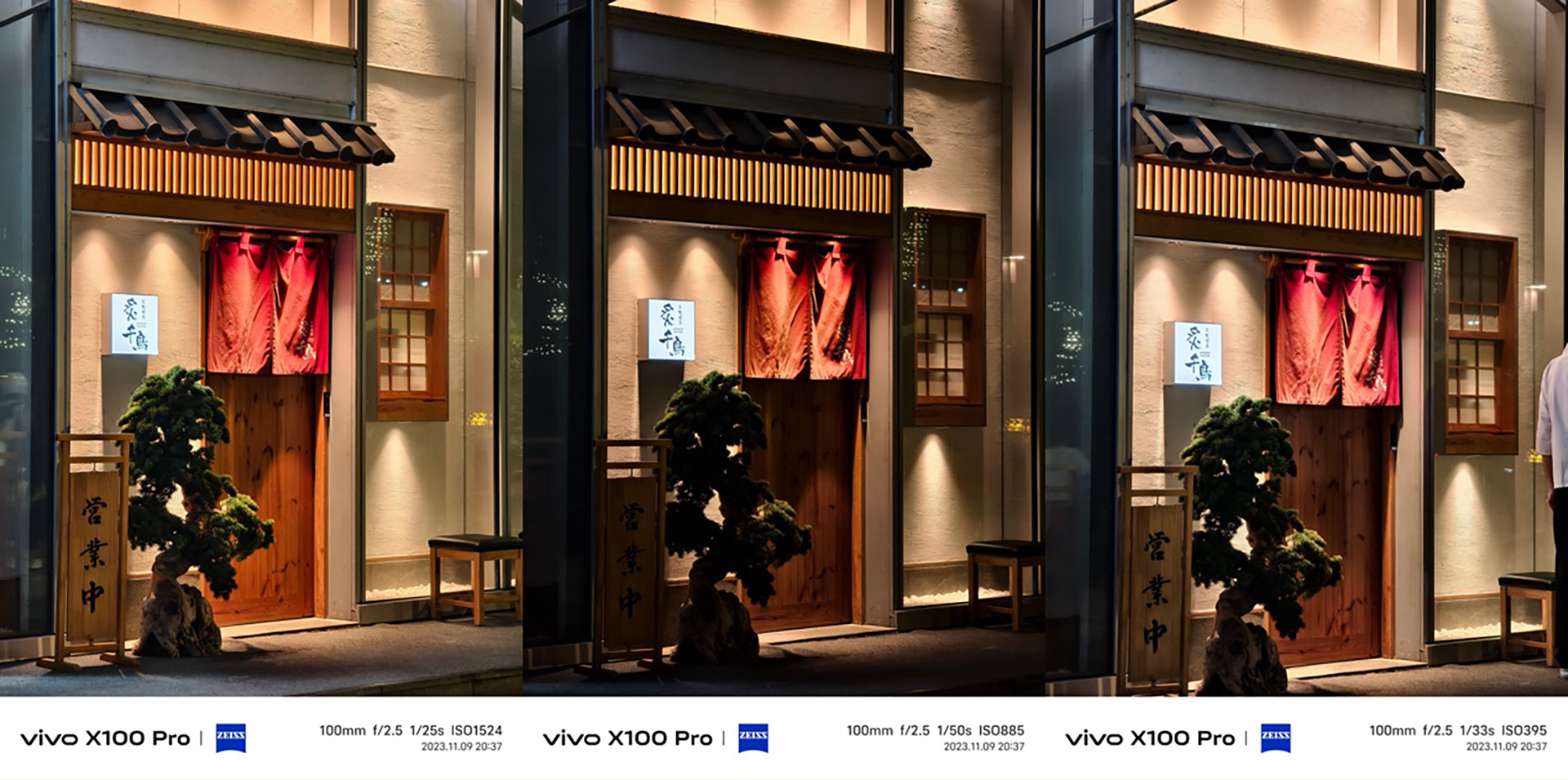
From left to right are the Sharp, Texture and ZEISS Natural Colour modes.
You can also compare the difference between the three modes, the overall colour saturation of the sharp mode will be higher, but the exposure strategy is similar to the Zeiss Natural Colour, the Zeiss Natural Colour film looks less saturated, the overall brighter feeling.
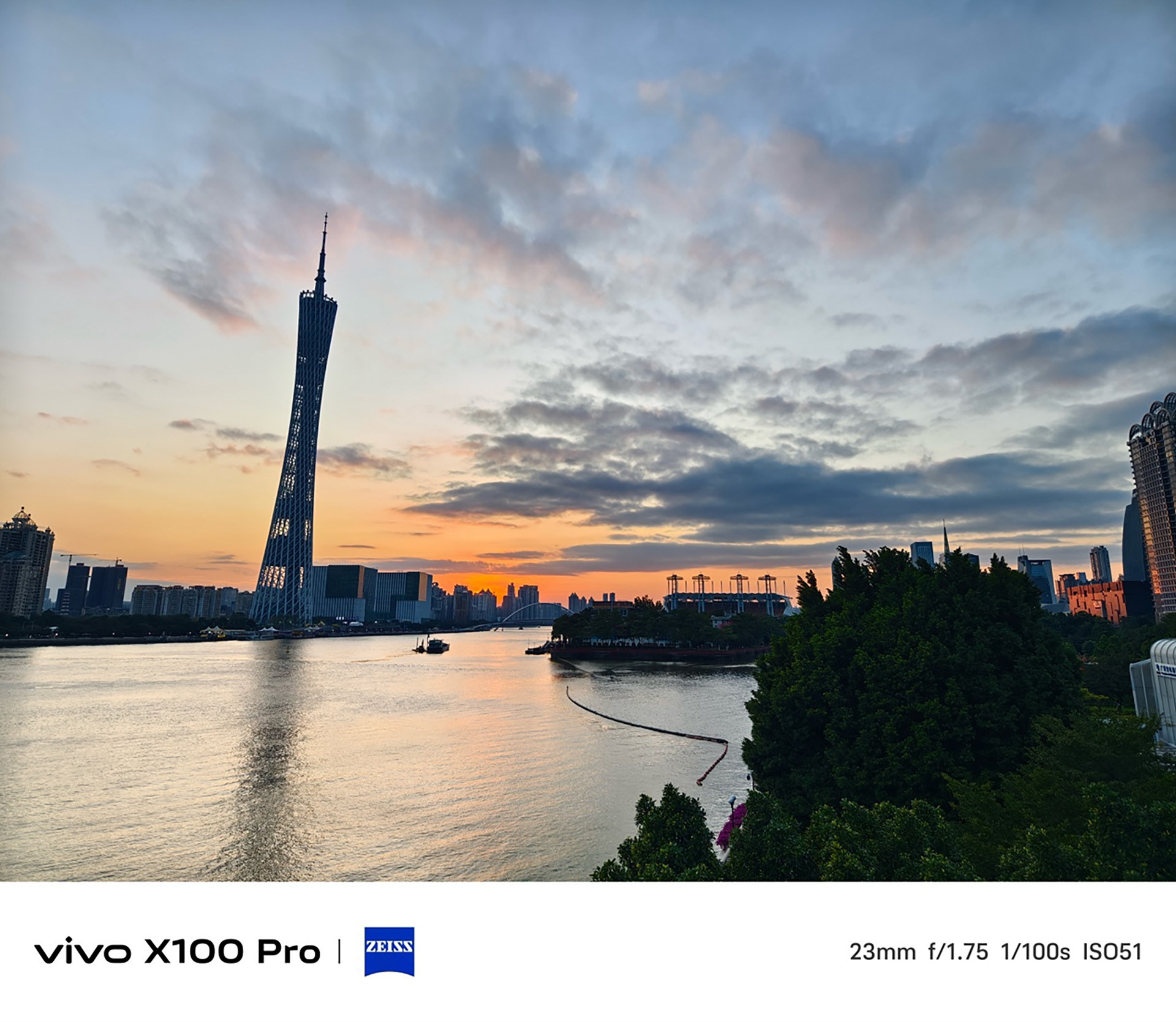
Let's take a look at the results of the main camera, the presentation of colour and image details is very beautiful, especially in the evening sunshine, such as the more complex colour overload of the scene, but also can be good enough to perform. It doesn't intentionally brighten up the brightness of the buildings in the near distance, and presents them in a more natural brightness.
The vivo X100 Pro has also added some ingenuity to the camera interface. When you press the 1x, 2x, 4.3x and 10x buttons, you can see that it can quickly switch between different focal lengths, with 23mm, 28mm and 35mm at 1x, 46mm and 50mm at 2x, 100mm, 135mm and 200mm at 4.3x, and 233mm and 200mm at 10x. At 10x there are 233mm, 300mm and 600mm, a fast zoom logic that no manufacturer has done before, making it more efficient and intuitive to use as users no longer need to drag the zoom ring to lock on to the desired focal length when shooting.
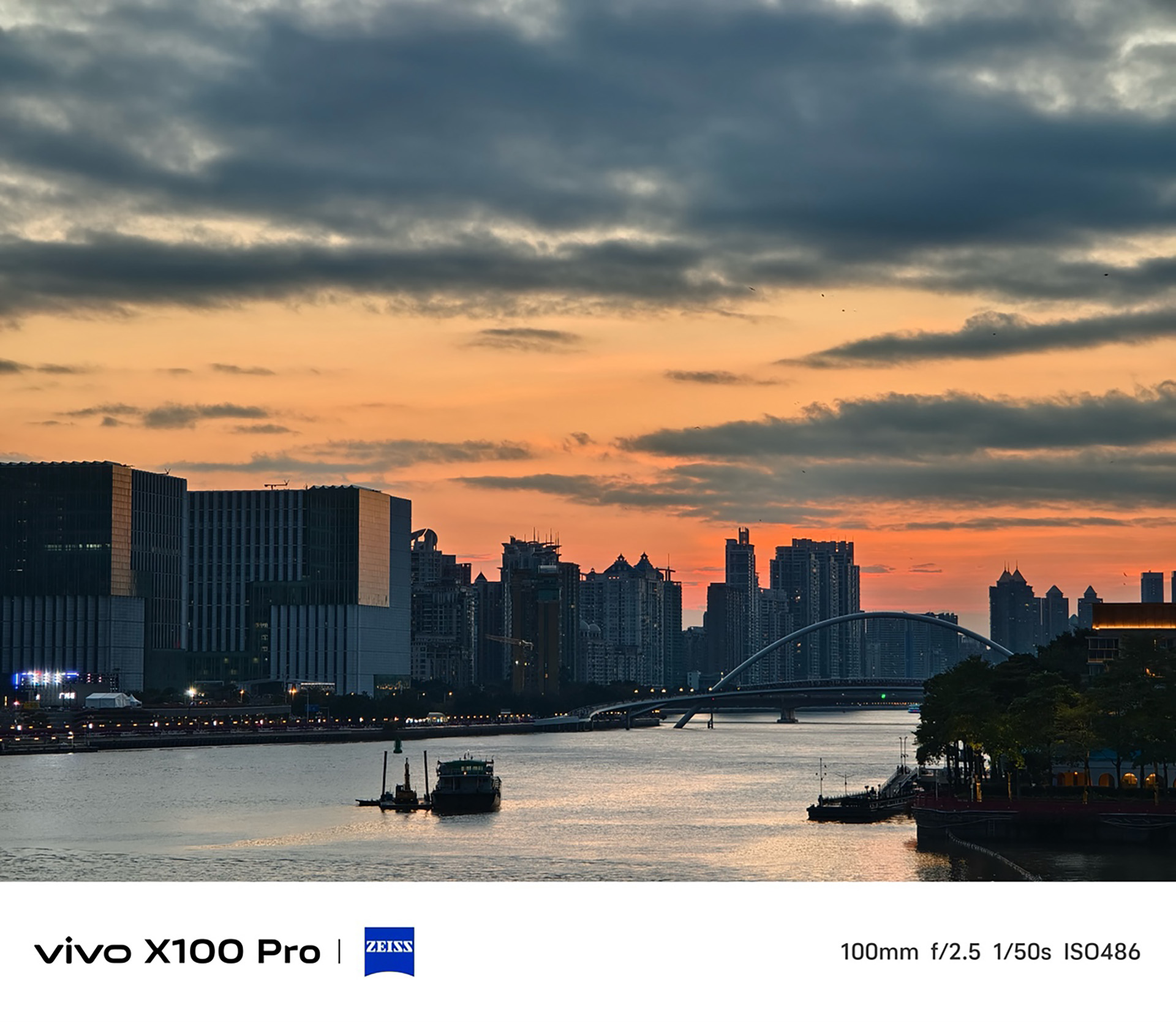
Speaking of this telephoto, it is a big deal, the quality of the lens is quite good, the effect of the shot is naturally very good, the presentation of the colour of the distant sky is as accurate as that of the main camera, and there is no colour breakage, and the reflection of the sky from the near buildings and the river is also well retained in the picture, the colour and exposure are all at the top level, and the effect of a casual shot can be really quite stunning.
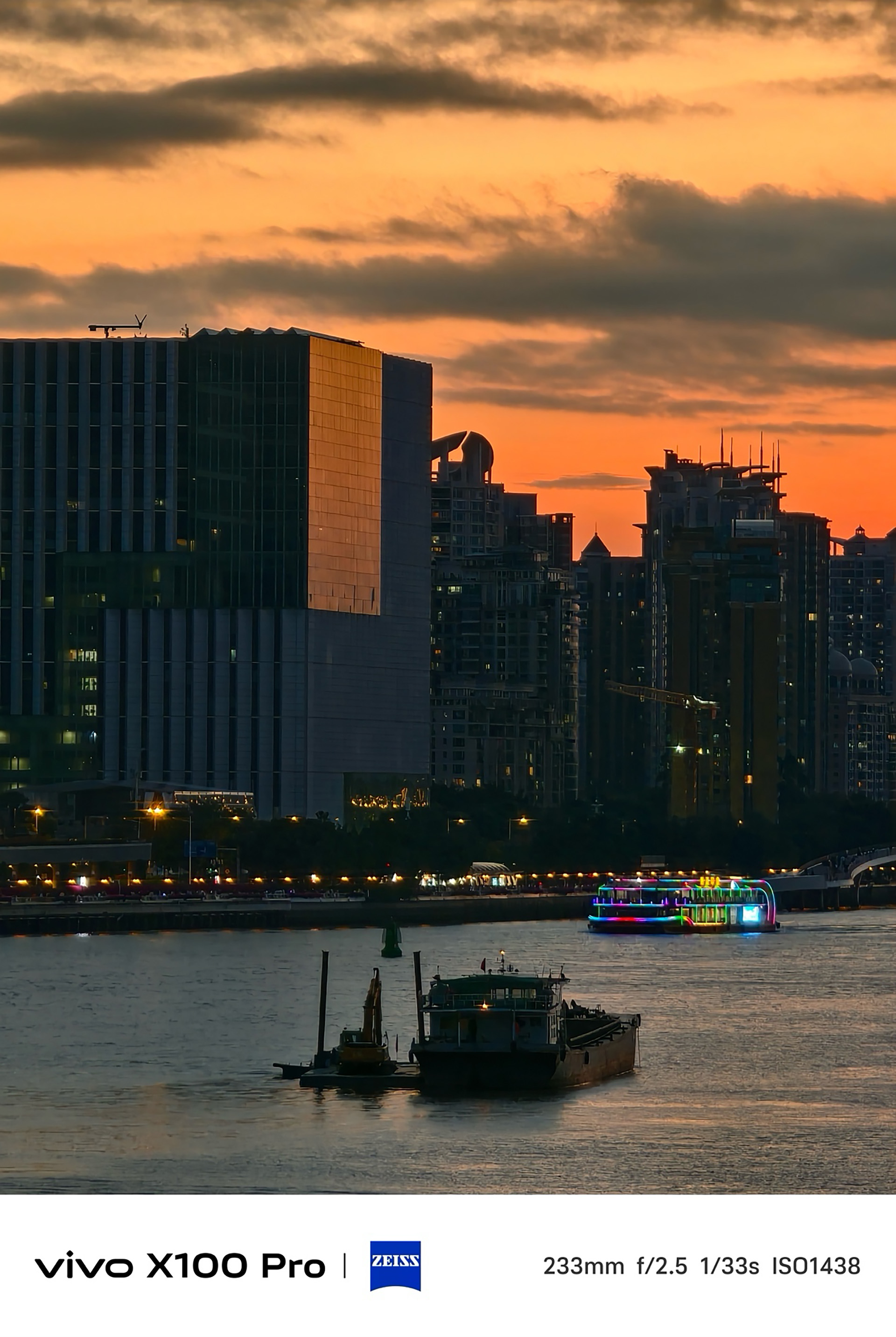
This telephoto lens, in good lighting conditions, can also have a great enough imaging effect, and even exceeds the results of many 5x or 10x optical zoom sensors, the control of colours and details is also as good as ever.
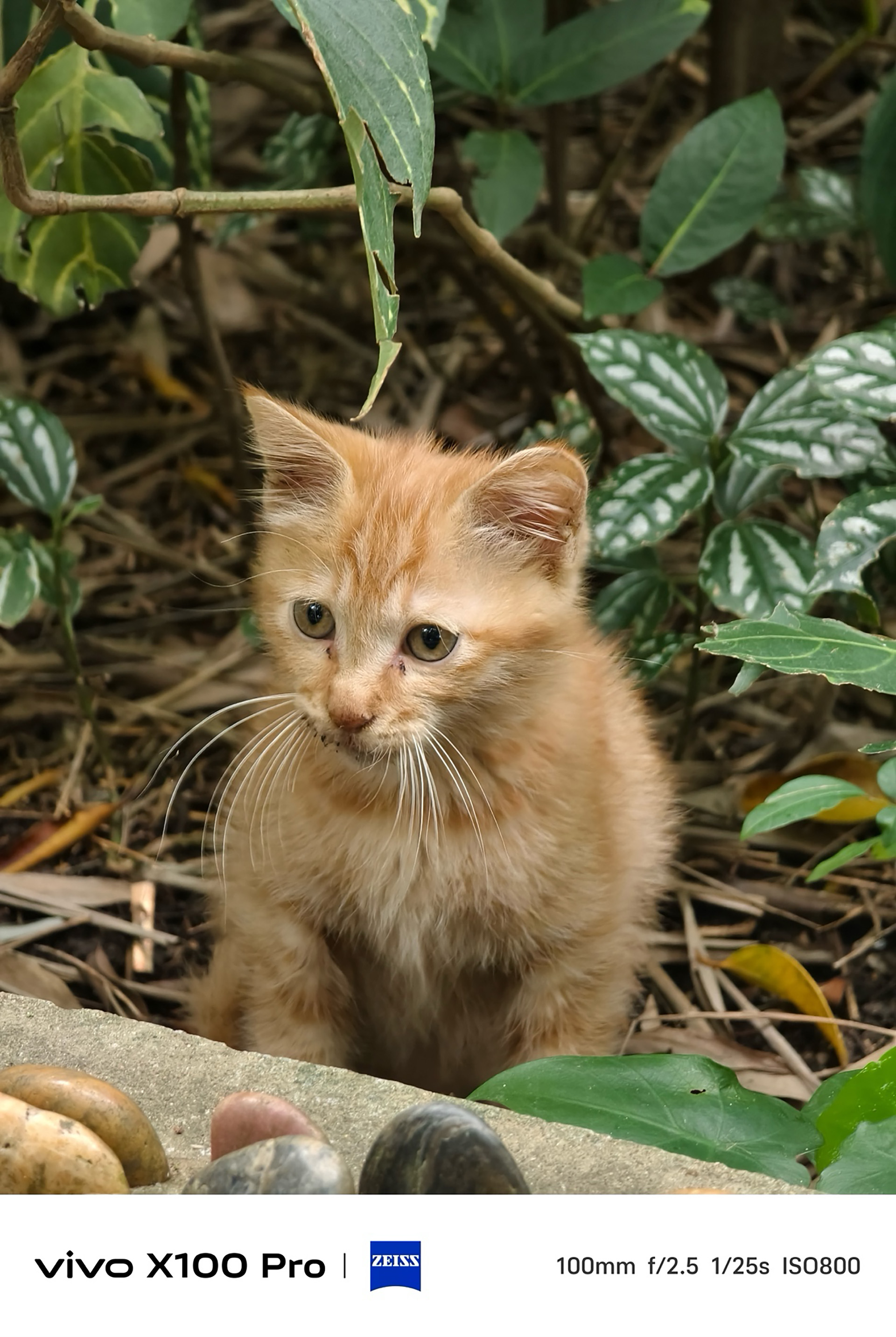
This telephoto lens also produces good results when shooting animals, with no oversharpening, and the kitten's fur in the image looks similar to what you can see with the naked eye, keeping the fluffy condition, which is a nice effect.

The telephoto lens' large f/2.5 aperture gives a great natural bokeh effect when taking this kind of photo, and the following photo is excellent both in terms of mood and in terms of the finished result.
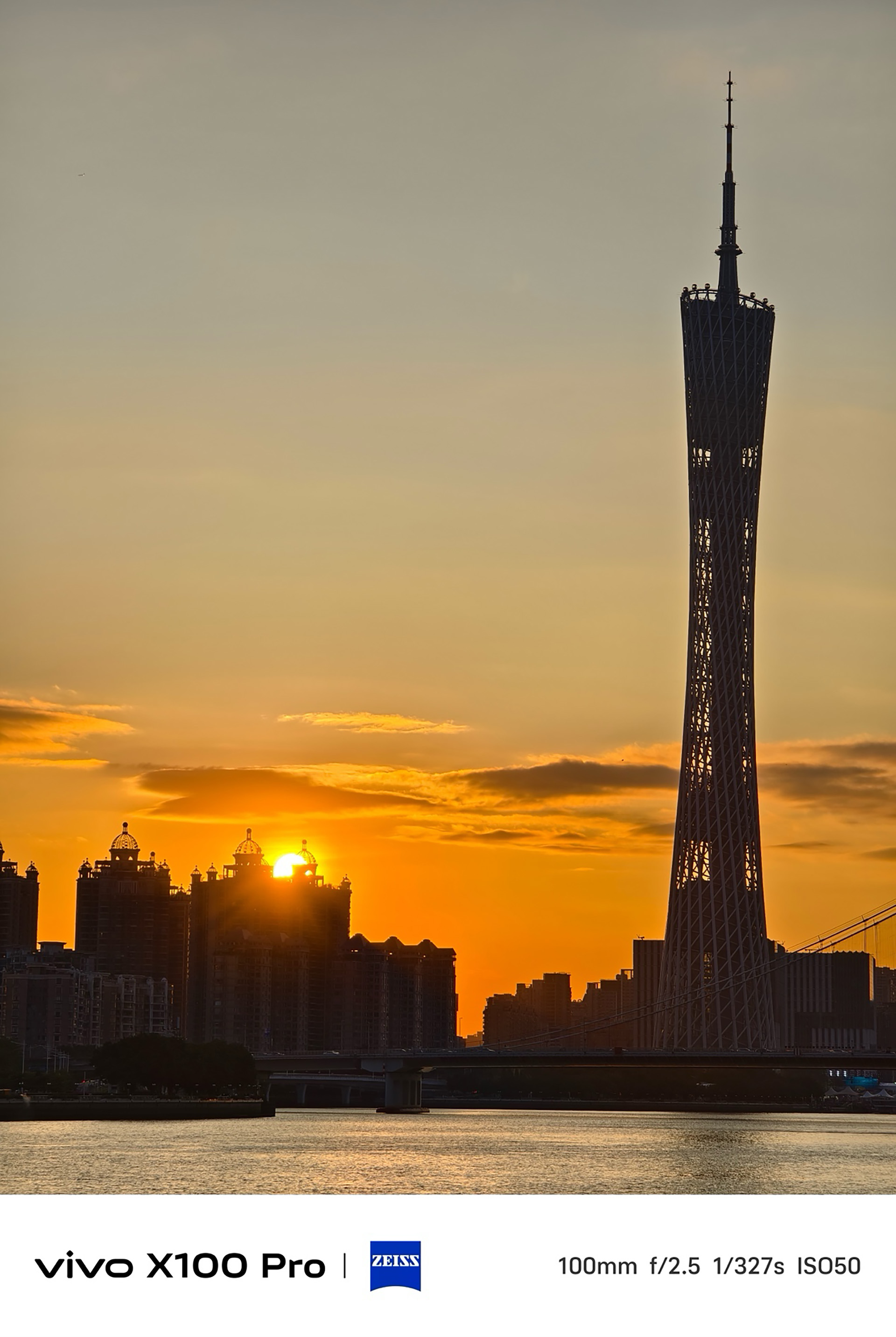
The telephoto lens also comes with an interesting feature called "Telephoto Hanging Sun", where the ZEISS T* coating does a great job of suppressing flare in large backlit scenes, and the software has special algorithms that work together to achieve the best possible results. Such photos, I believe that there should be no mobile phone on the market to be able to shoot the same effect, really very stunning, I believe that for those who like to shoot the sunset every day to shoot the sunset, it will be quite practical.
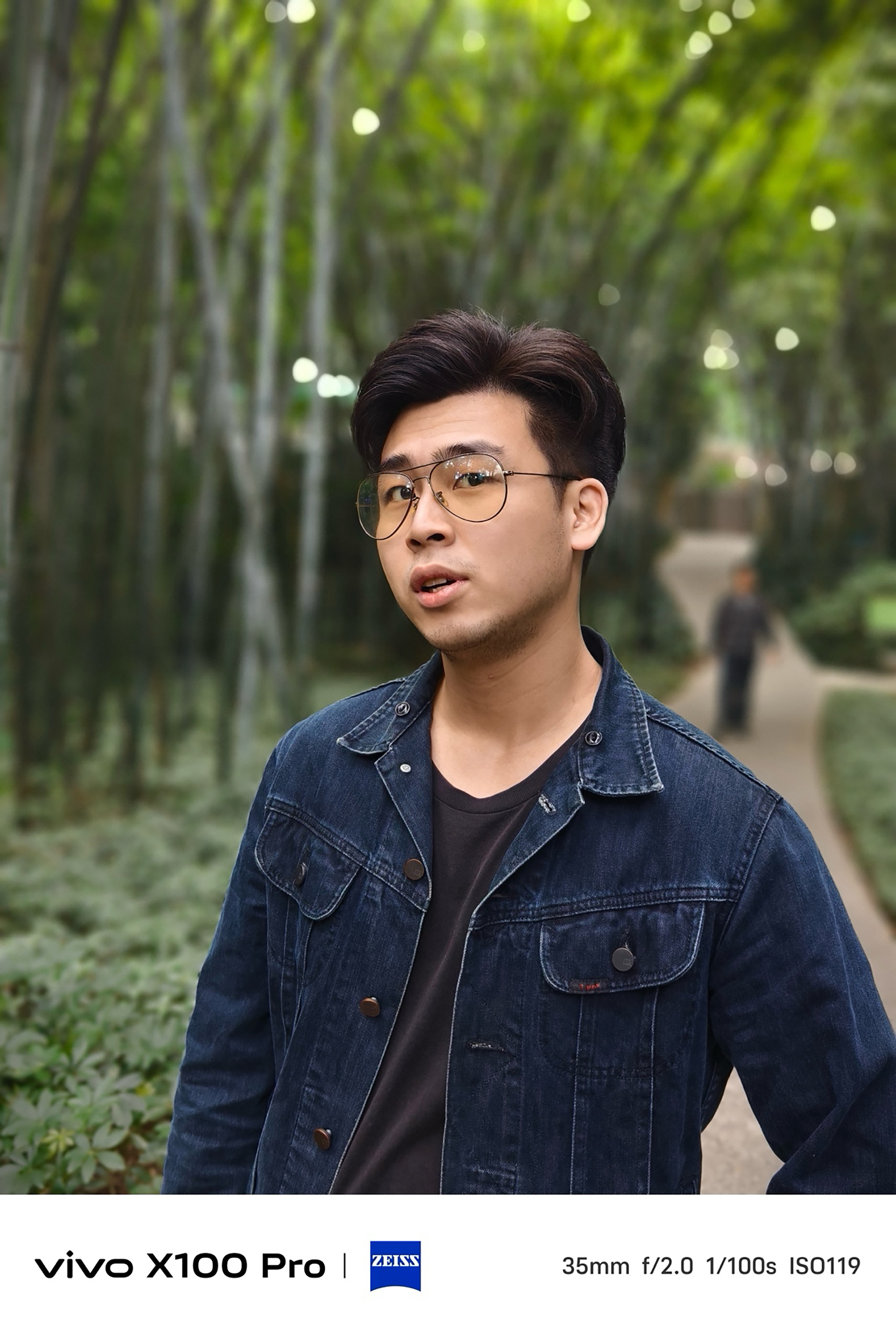
Another highlight of the vivo image, is the portrait mode shooting, this time vivo X100 Pro introduced the concept of full focal length portrait master, that is, the user can freely choose 24mm, 35mm, 50mm, 85mm and 100mm five focal lengths to shoot portrait photos. And this time, the Zeiss lens package also includes B-Speed style bokeh, with a rounded triangular bokeh light panel that's very premium looking.
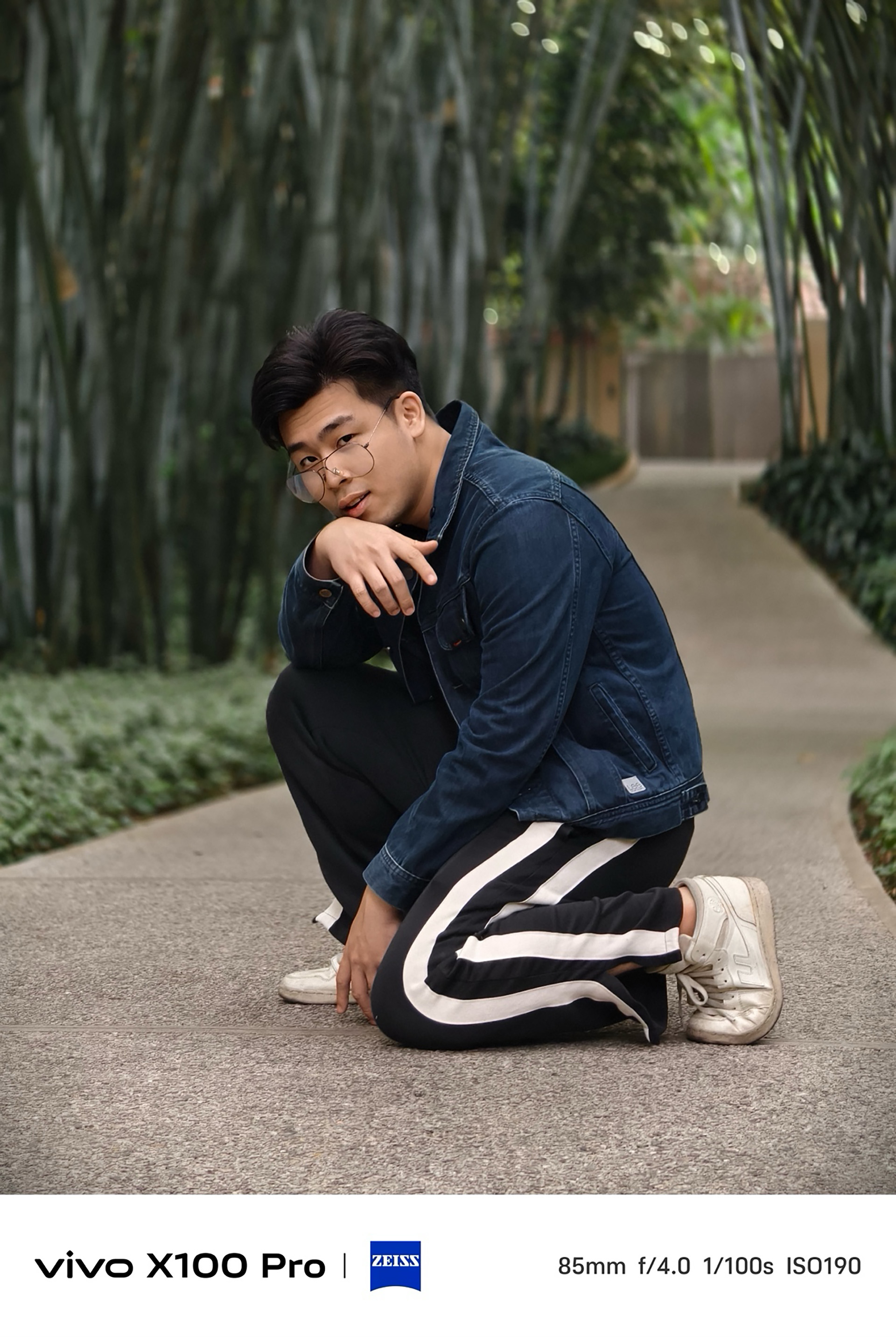
The edges of people are accurately keyed, and the classic Biotar bokeh effect makes the background bokeh even more natural-looking.
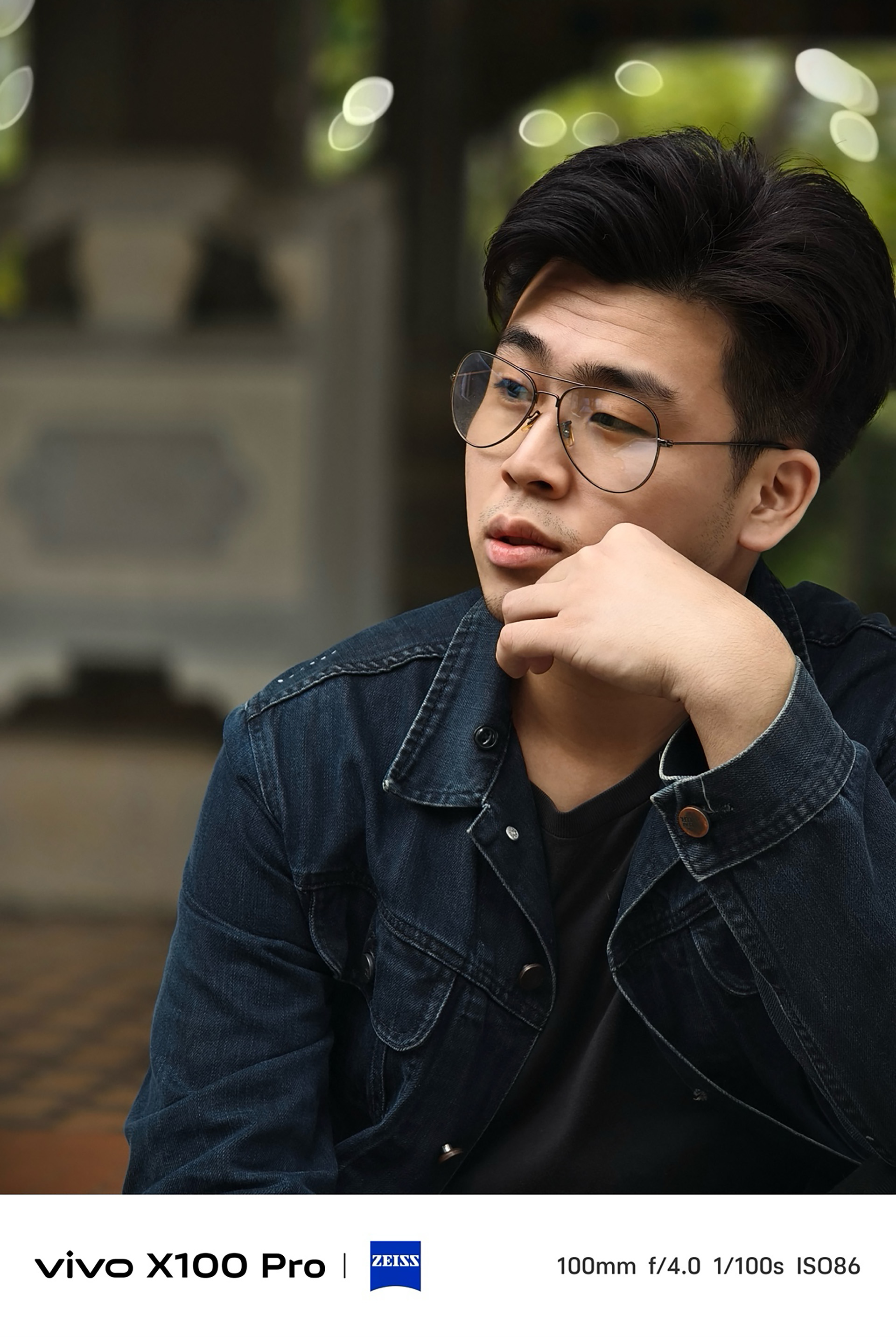
Vivo has always been at the forefront of the industry when it comes to the treatment of facial light and shadows and skin texture and tone in Portrait Mode, and this time is no exception, delivering a near-perfect score in Portrait Mode photos.
This time there is another feature worthy of praise, is the album of custom watermarks, in the album there is a very rich default watermarks to choose from, and even add their own handwritten signature can be, for professional users, the default on the photo watermarks should be a little more people.
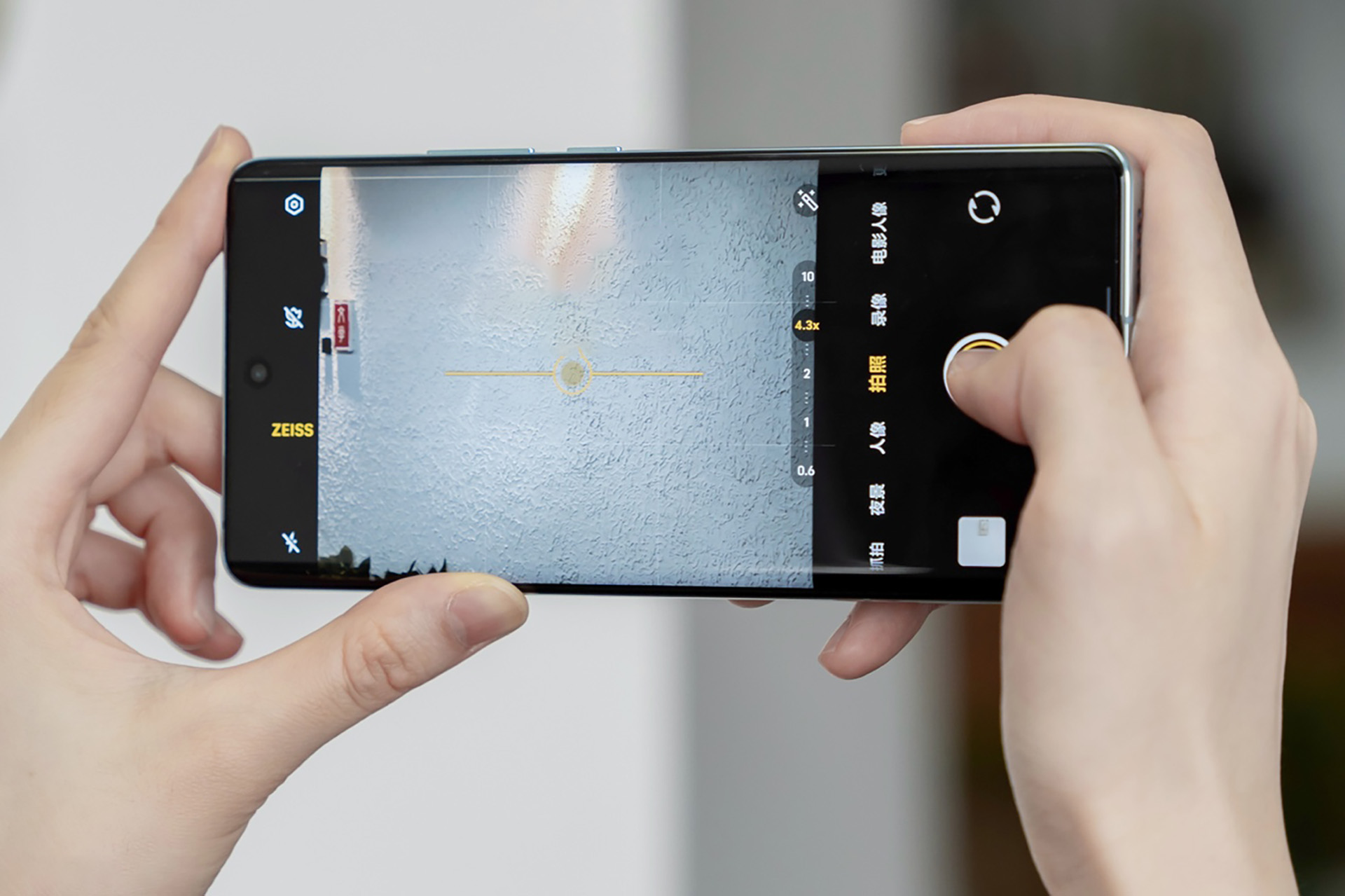
Finally, we should talk about a small regret, vivo comes with the album in the XDR photo display is on by default, and in some of the large light ratio of the photos in the browsing effect is quite amazing, the bright places are very bright, the dark places are also not lost details, can bring a very good visual experience to the user of the mobile phone, but once you turn off the XDR photo display, the photos will become very dull, a sense of disparity, even if the user shares the photos, the user will be able to share the photos with the user. But once you turn off the XDR photo display, the photos become very bland and fall short, and even if users share them, the effect is definitely not as stunning as it would have been with the XDR display.
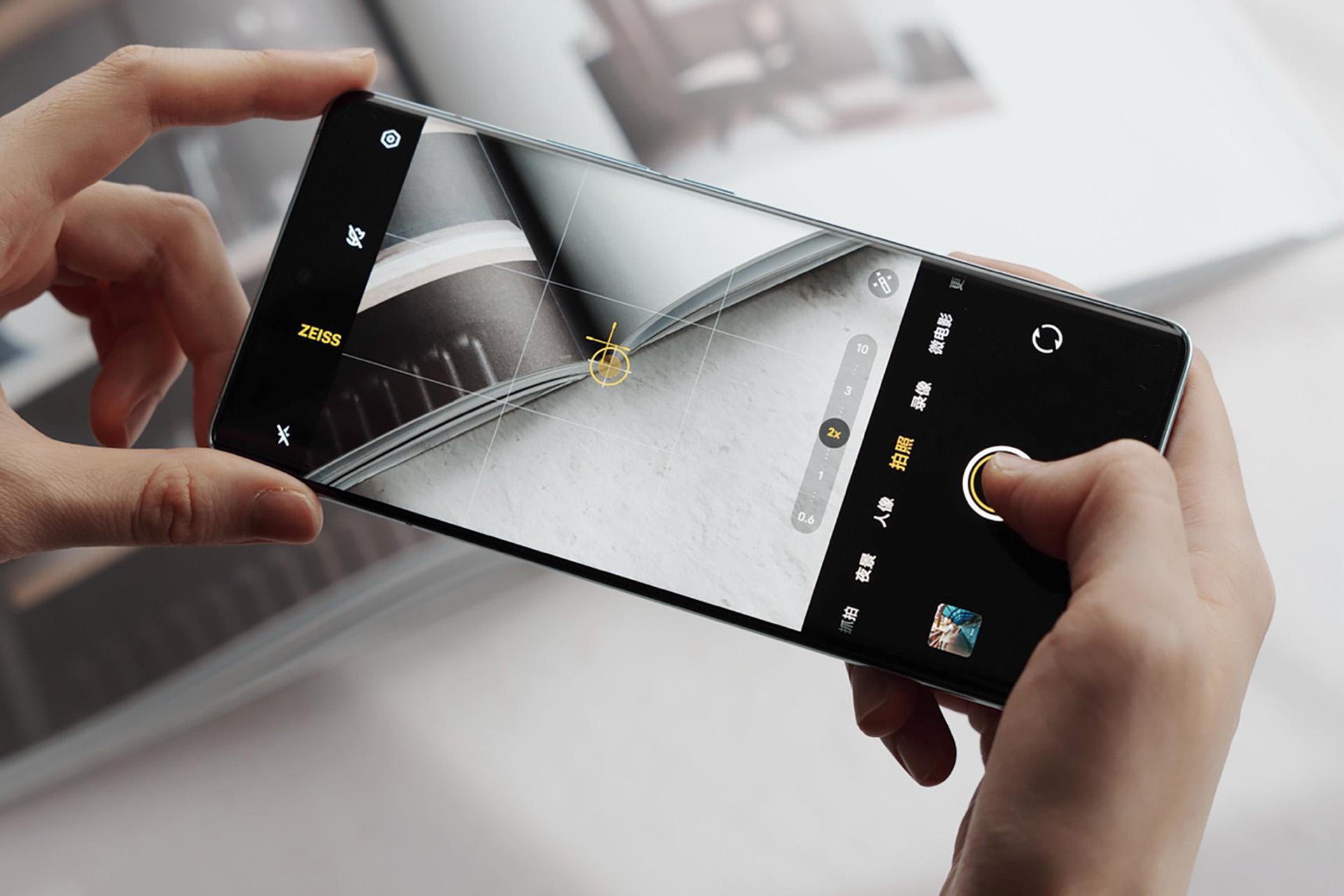
Of course, this isn't a problem for Vivo, it's more of a problem with social media and workflows that don't allow users to share photos with this effect. Now that everyone is following up on the XDR Photo feature, and the new versions of Lightroom and Photoshop bring the ability to edit HDR photos, we can only hope that in the future we'll be able to share these types of photos on social media, so this feature won't be limited to "self-congratulatory" photos. We can only hope that these types of photos will be shared on social media in the future, so that this feature is no longer limited to "self-improvement".
Tenguet Performance King + Chinese High Glossy Screen, Long Life with Large Battery Capacity
After talking about images, let's talk about performance and screen, which are closely related to daily use. In terms of performance, the Vivo X100 Pro is equipped with MediaTek's Tenguet 9300 flagship mobile platform, which is the latest flagship chip released, and its strength is not to be underestimated. It adopts an all-core architecture consisting of four Cortex-X4 supercores and four Cortex-A720 cores, which has a strong performance, and according to the official data, the peak performance has been increased by 40 per cent, while the power consumption has been reduced by 30 per cent.
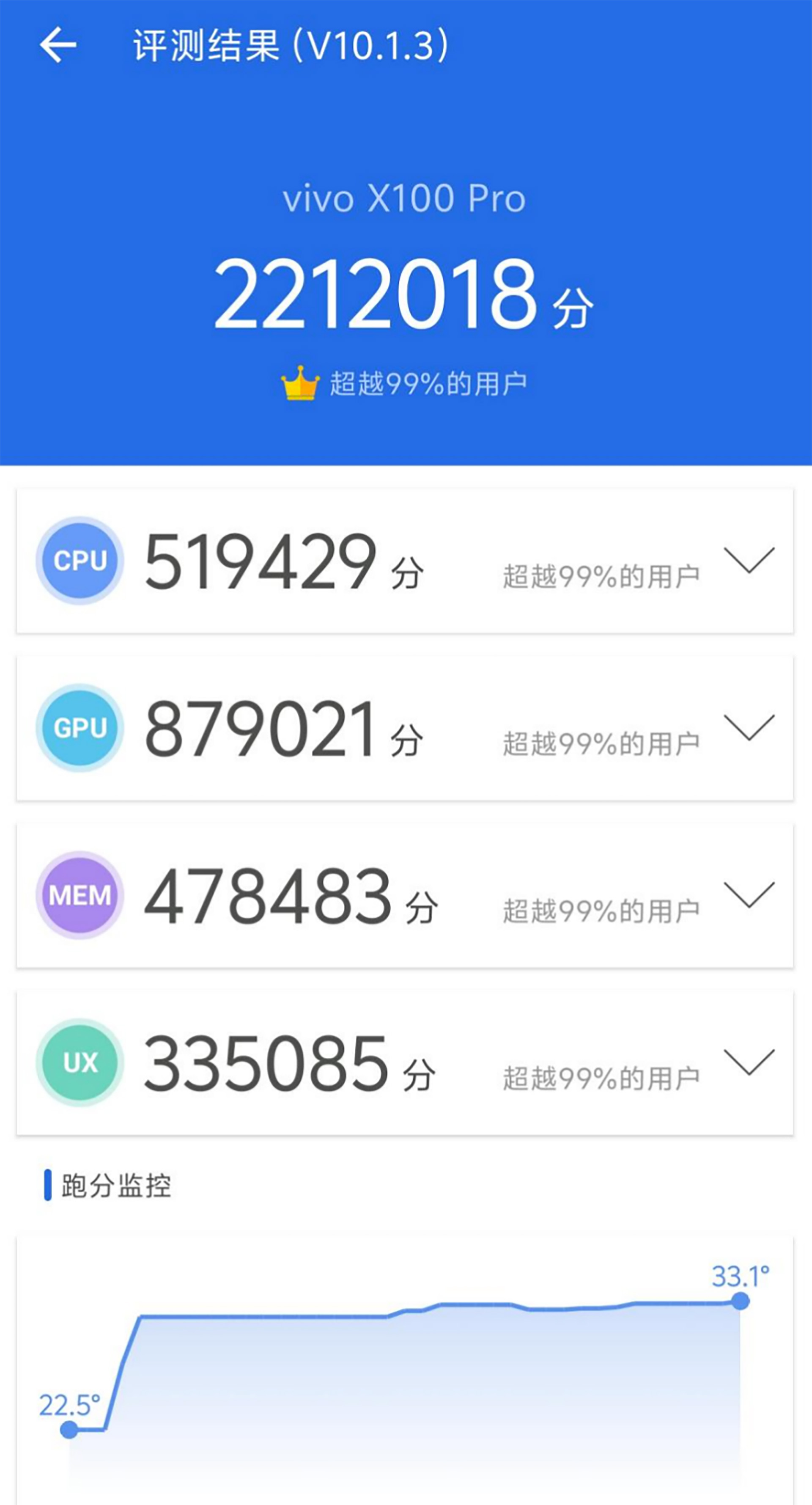
The GPU is the Imoortalis-G720, a 12-core processor with a 46% increase in peak performance and a 40% reduction in power consumption. We also ran a score test on the processor, and it scored 2.21 million points, compared to the Snapdragon 8Gen3, which was released at the same time and scored only about 2 million points. Whether you're playing "Glory of Kings" or "Original God", you'll have a smooth and stable experience.
Screen, vivo X100 Pro equipped with a 1.5K resolution micro-curved screen, the back panel adopts 8T LTPO technology, the measured global brightness is 638nit, the excitation brightness can go up to 1600nit, and the HDR local brightness of the small window can even go up to 3000nit, which is quite a stunning value.
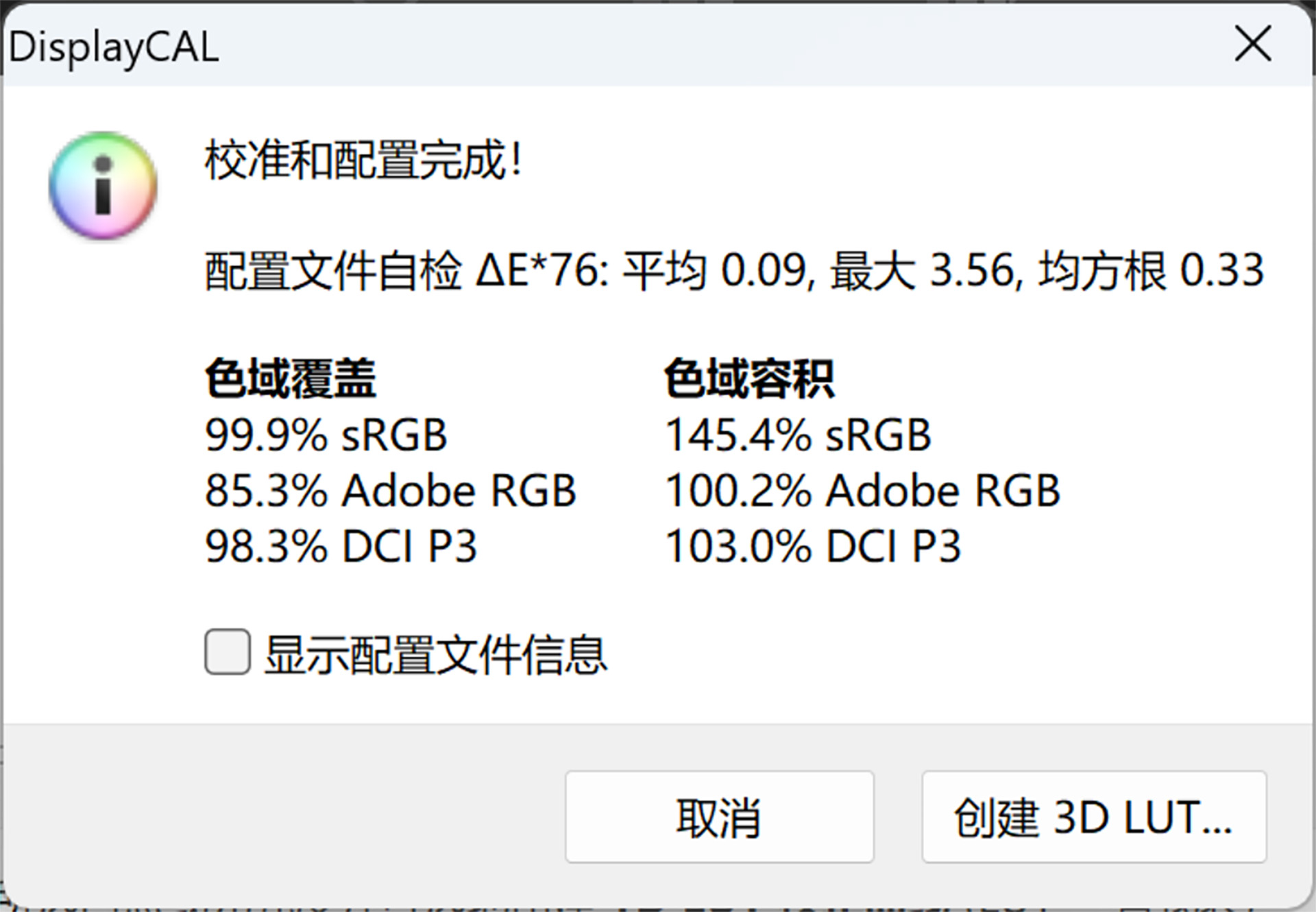

Colour calibration and colour gamut, we also did a test, the measured colour gamut coverage is 99.9% sRGB, 98.3% DCI-P3, the average △E of colour calibration is 0.34, there is no need to worry too much about this aspect, and the actual viewing effect of the screen is still good.
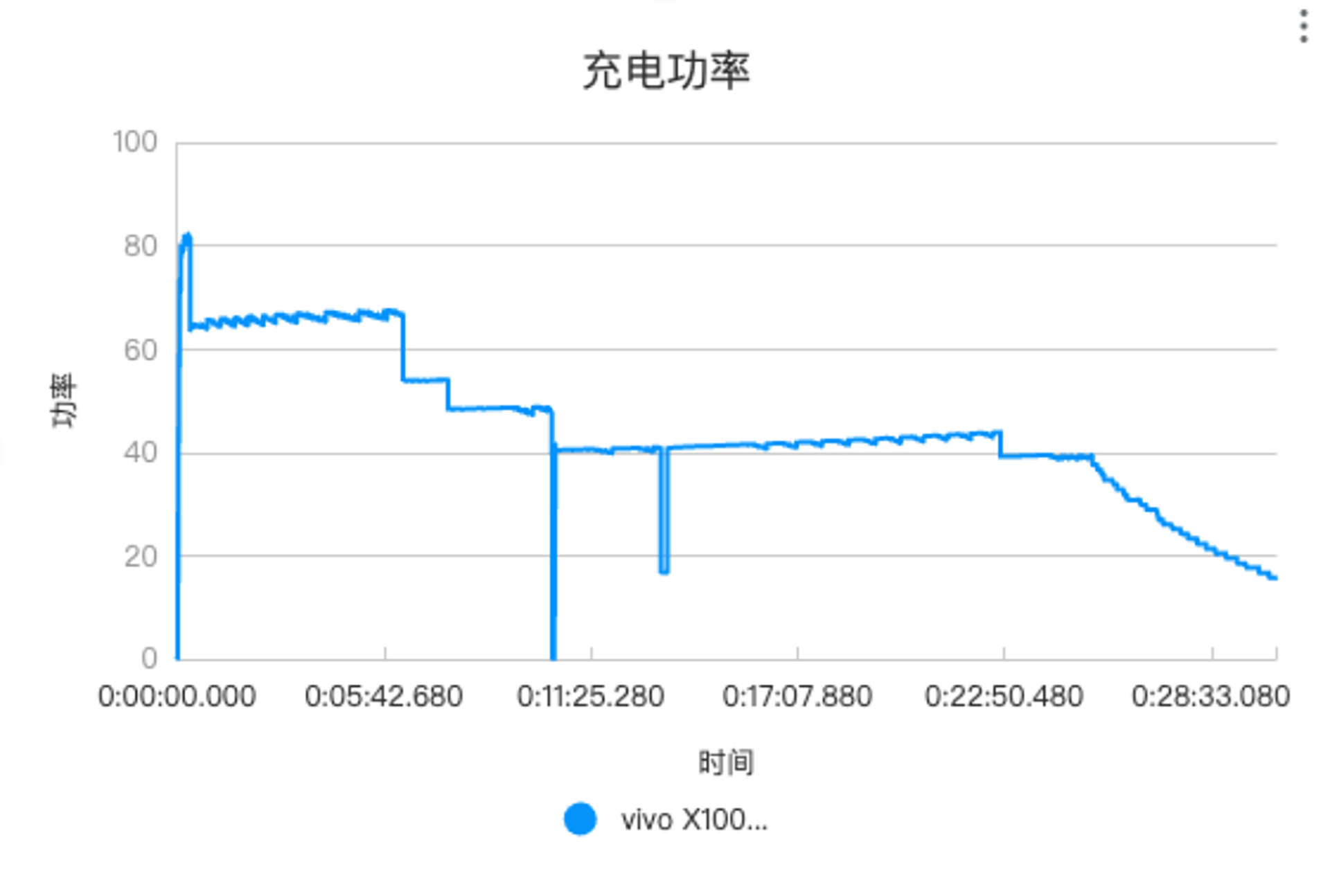
Charging life, vivo X100 Pro equipped with an equivalent 5400 mAh blue sea battery, and support 100W dual-core flash charging. The actual test in the room temperature of 26 degrees, the phone from 1% to start charging, about 6 minutes, charging power from 65W fell to about 50W, 12 minutes charging power to stay at 40W, at this time the phone power 53%, the front of the phone reached a temperature of 44 degrees, or relatively hot. 25 minutes later, the charging power from the 30W began to slowly decline, charging for 30 minutes, the power to 98%, the charging of 30 minutes, the power of the phone to 98%, the power of the battery, the power of the battery, the charging of the battery, the power of the battery, the power of the battery, the power of the battery. The temperature of the front of the phone is 40.2 degrees, and the back is 38.9 degrees. The phone may be hotter in the pre-fast charging period. vivo X100 Pro phone and charging head also supports PPS 100W charging, which means that some third-party charging heads can also be used on this phone as long as they support this protocol, and the original charging head can also be used for charging devices that support the PPS protocol.
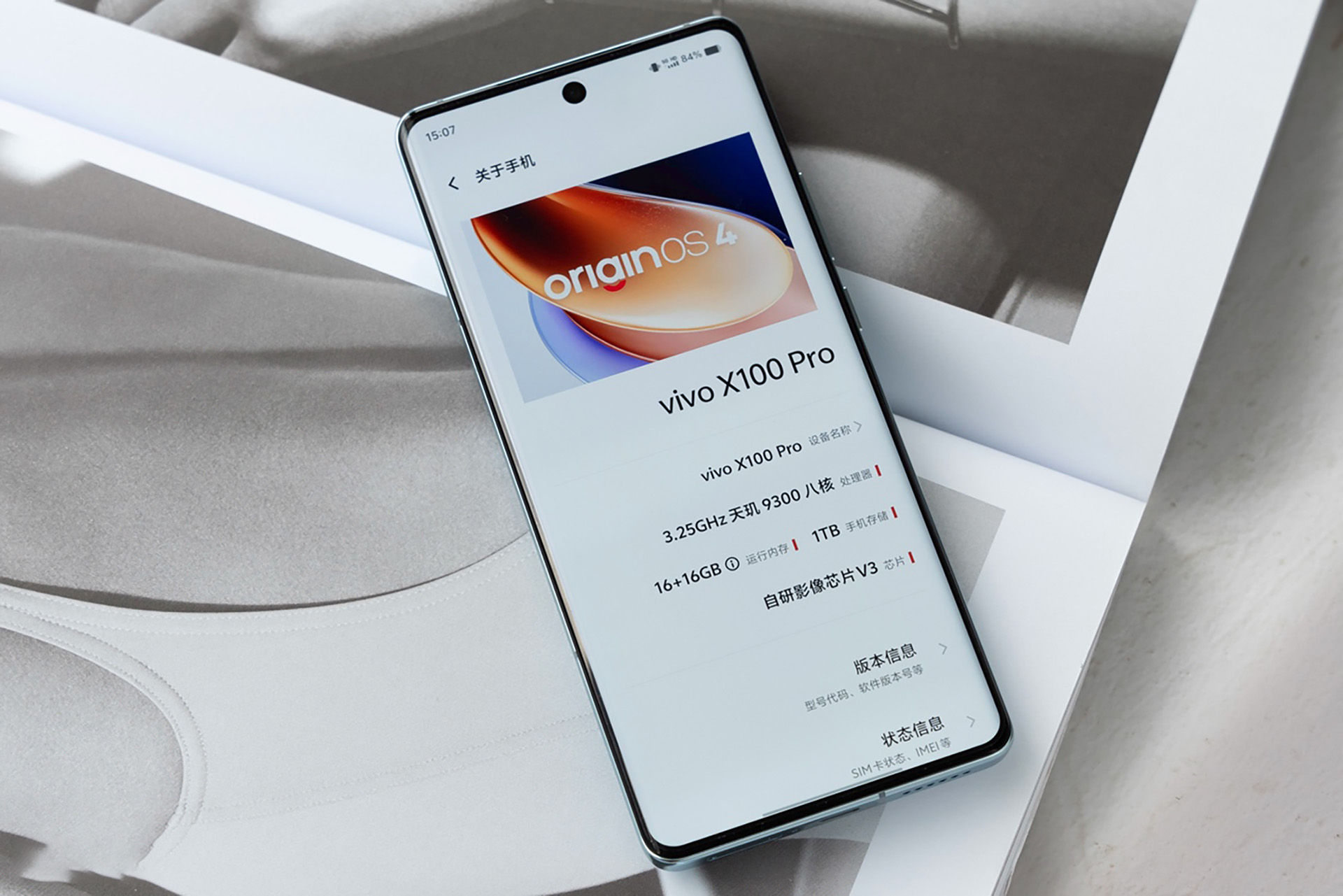
Summing Up
The exterior texture of the vivo X100 Pro made me fall in love with such a machine at first glance, with the atmospheric and good-looking colour scheme, and the texture-pulled metal lens ring, all of which are plus points. In terms of imaging, the X100 Pro does have class-leading power, with a combined performance that completely outperforms its big brother, the X90 Pro+. There's also the powerful and power-saving Tenguet 9300, the screen is a super-bright domestic screen, and a massive 5400mAh battery is crammed into the case while keeping the thickness of the body, which makes it a favourite on every point of the parameter.
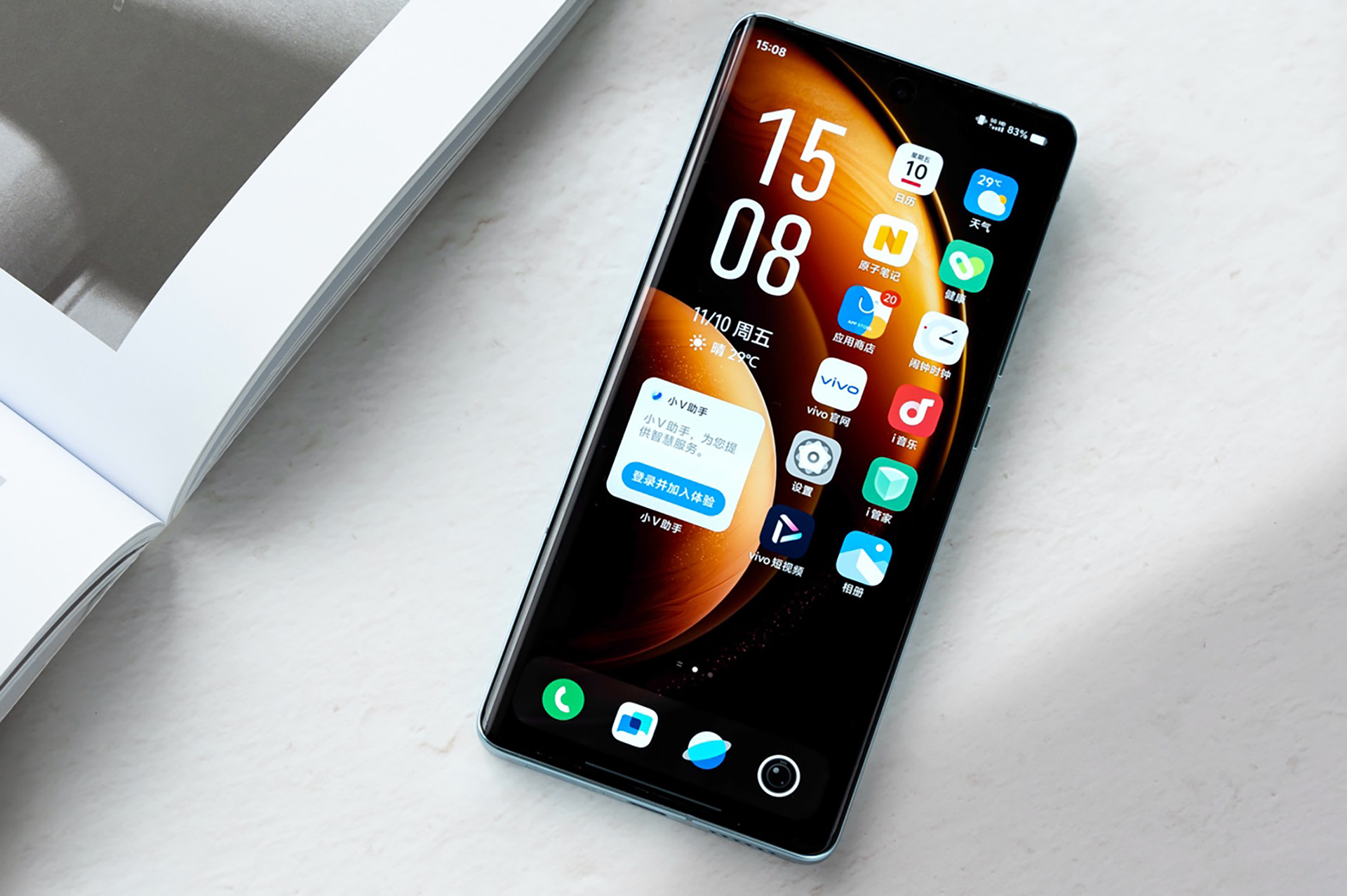
But is the X100 Pro really completely without regrets? Not really, the lower position of the short focus fingerprint module, so that the fingerprint unlocking is not smooth, and the actual experience is certainly far less than the wide-area ultrasonic to the smooth, no 2K resolution of the ultra-high definition screen, no 120W ultra-fast flash charging, are all considered to be a few minor regrets. Personally feel that vivo is indeed to do over the level, but the pricing is limited to the scope of the Pro, in the image of the big upgrade at the same time, can only do some subtractions in other areas, it is also a last resort, which creates such a "biased student".
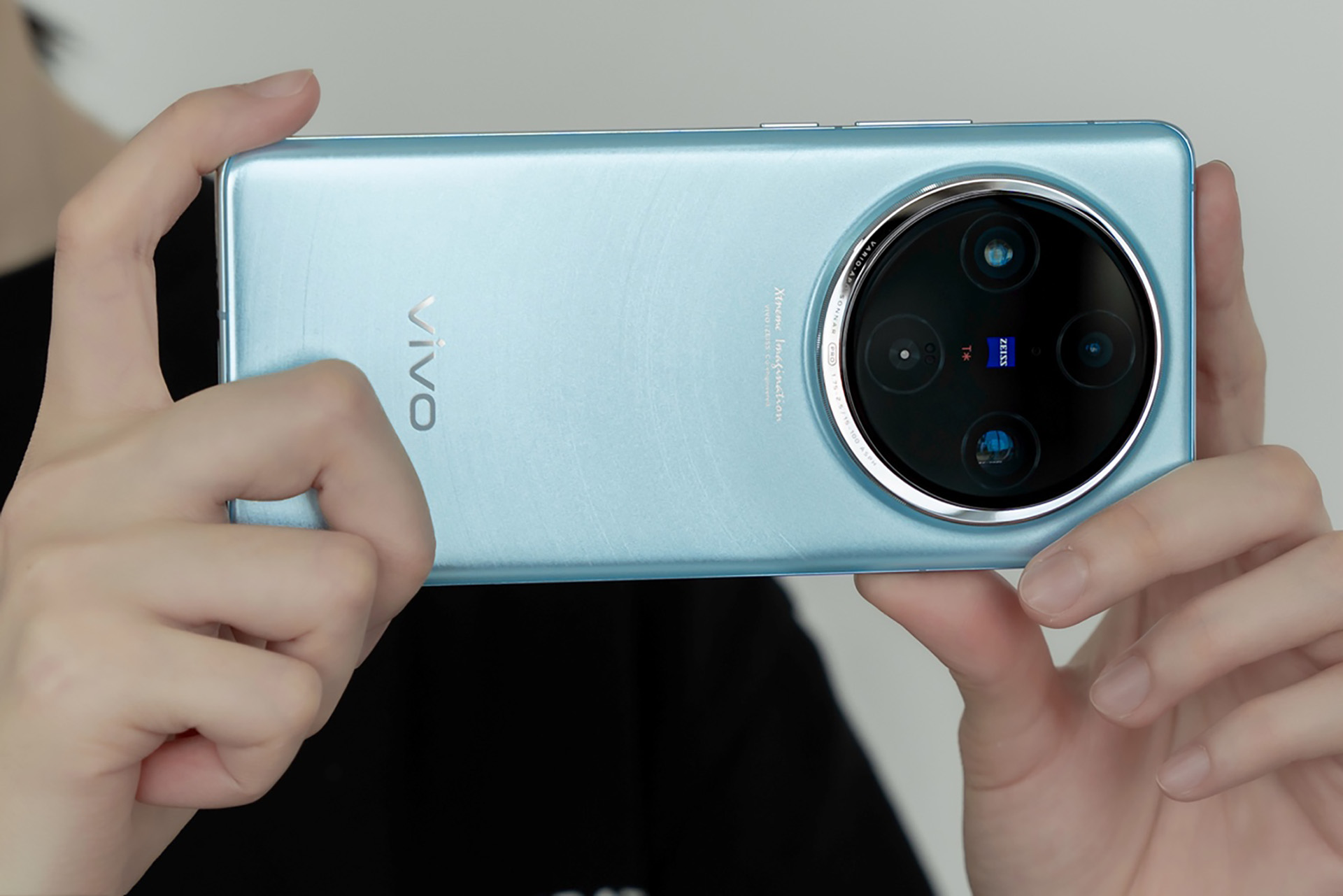
I certainly hope that Vivo can really make a comprehensive and perfect flagship product regardless of the pricing. The current Vivo X100 Pro is actually very suitable for users who have the pursuit of the ultimate image to buy, and also has such a high value and feel, I believe that you will not be disappointed when you get your hands on it.

